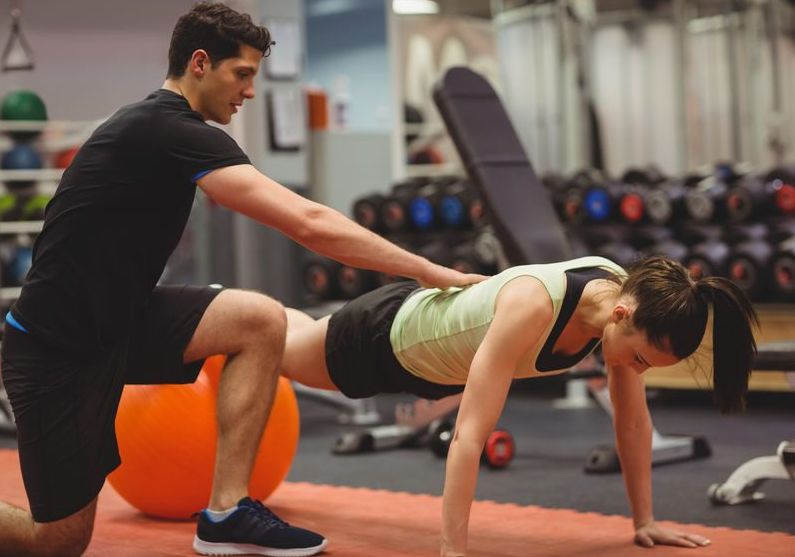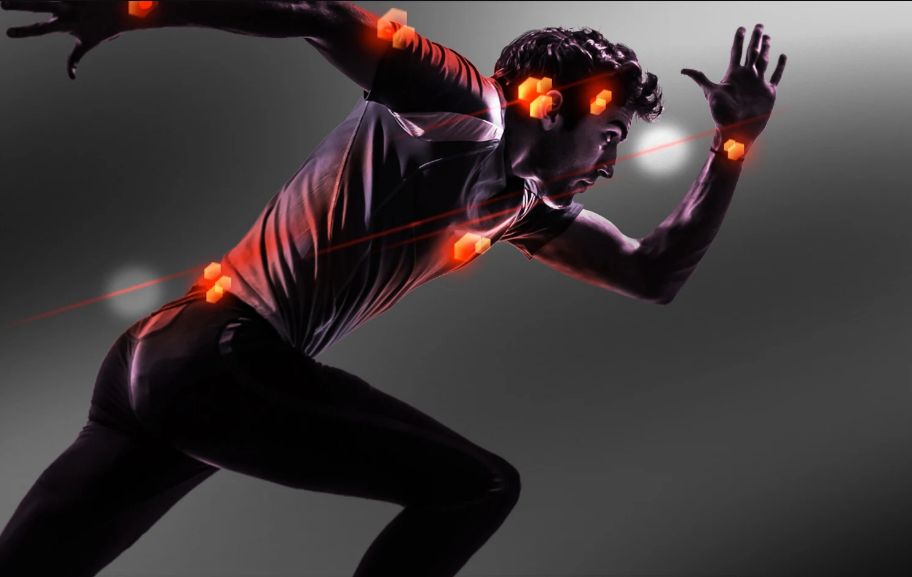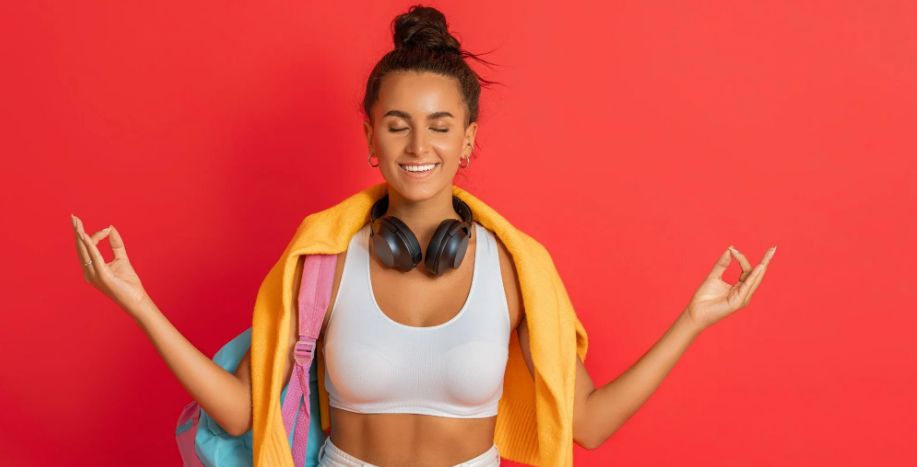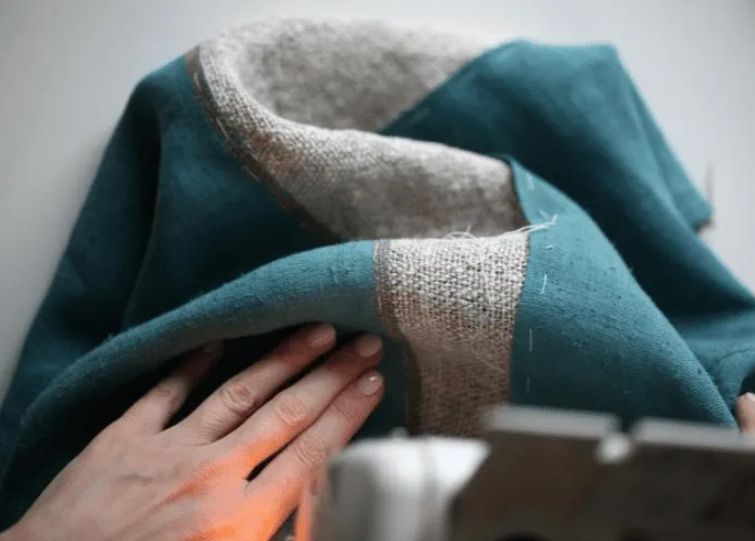Why Quality Matters: Selecting the Best Fabrics for Fitness Apparel Inspired by the Popular Gym Clothing Brands.
 2024-04-02
2024-04-02

 Sansansun
Sansansun
Introduction
In the fitness apparel industry, fabric selection transcends mere aesthetics; it's a pivotal decision impacting functionality, comfort, and endurance. Inspired by the popular gym clothing brands, key factors like moisture-wicking capabilities (absorption ≤3%), tensile strength (≥5 grams/denier), and stretchability (elongation at break ≥50%) are paramount.
This exploration into the best fabrics for fitness apparel delves into the nuanced interplay of these elements. We examine synthetic and natural fibers, each boasting unique attributes: synthetic for durability and moisture management, natural for comfort and eco-friendliness.
Advanced technologies like nanotechnology and smart textiles further refine fabric efficiency, augmenting the fitness experience.
Understanding the Unique Needs of Fitness Enthusiasts!

Sweat Management
Nylon leads in wicking, dispersing moisture rapidly. Polyester, hydrophobic, resists saturation. Spandex, with elastic fibers, enhances fit retention. Dual-layered fabrics merge benefits: inner hydrophilic, outer hydrophobic. Integrated mesh zones amplify air flow.
Fabric treatments, like antimicrobial coatings, combat odor. Moisture-wicking capability quantified: Nylon (88%), Polyester (81%), and Spandex (5%). Layering technique optimizes perspiration evaporation.
Thermal Regulation
Merino wool regulates temperature effectively. Polyester's thermal insulation property is notable. Fabric weaves density impacts warmth retention. Breathable fabrics prevent overheating during workouts.
Reflective elements in fabric boost visibility in low light. Infrared technology in yarns enhances warmth. Temperature quality control measured in TOG (Thermal Overall Grade) units. Advanced fabrics feature adaptive thermal regulation, responding to body heat changes.
Flexibility
Spandex, dominant in stretchability, integrates into fabrics. Four-way stretch fabrics offer maximum mobility. Seamless construction enhances flexibility, reduces chafing. Reinforced stitching in high-movement areas ensures durability. Fabric elasticity measured in elastane percentage (10-30%).
Yarn twist level influences fabric stretch. Blended fabrics balance flexibility and form stability. Active wear designs prioritize movement range, adapting to dynamic motions.
Durability
Cordura is known for resistance to abrasions. Ripstop fabrics thwart tearing propagation. Reinforced seams extend garment life. Abrasion resistance quantified using Martindale rub tests.
Water-resistant coatings add longevity in outdoor conditions. UV resistant fabrics prevent color fading. Durability factor: High-tenacity yarns increase tensile strength. Double-knit constructions offer enhanced durability. Fabric thickness (measured in GSM) correlates with wear resistance.
Compression
Compression fabrics, typically nylon-spandex blends, improve muscle support. Graduated compression enhances blood flow. Fabric compression levels measured in mmHg (millimeters of mercury).
Strategic panel placement augments compression effectiveness. Recovery benefits linked to specific compression levels. Compression wears aids in reducing muscle oscillation. Elastic recovery rate is crucial for sustained compression. Compression garments integrate ergonomic seams, enhancing comfort.
UV Protection
UPF (Ultraviolet Protection Factor) rated fabrics shield from harmful rays. Polyester provides inherent UV resistance. Tighter weaves improve UV blocking. UPF rating system: Excellent (40-50+), Very Good (25-39), Good (15-24). Titanium dioxide infused yarns enhance UV protection. UV absorbing chemicals applied during fabric finishing. Darker colors generally offer better UV defense. Sun protective clothing is essential for outdoor activities.
The Role of Fabric in Athletic Performance!

Moisture Wicking
Fabrics like nylon excel in moisture expulsion. Polyester's quick-dry feature stands out. Hydrophobic qualities keep athletes dry. Capillary action in fabric is critical for wicking.
Sweat evaporation rate varies by fabric type. Advanced weaves create optimal moisture paths. Hydrophilic inner layers absorb perspiration. Outer layers repel water, aiding quick drying. Wicking efficiency gauged by drying time tests.
Recovery
Compression wear aids muscle recuperation. Graduated compression supports blood circulation. Compression level measured in mmHg. Blended fibers optimize recovery properties.
Fabric pressure distribution is key to effectiveness. Recovery speed linked to fabric compression. Elasticity maintains consistent pressure. Advanced knitting techniques enhance compression zones. Wear durability impacts long-term recovery support.
Lightweight
Light fabrics improve athletic performance. Weight measured in GSM (grams per square meter). Advanced fibers offer strength without bulk. Fabric thinness contributes to weight reduction.
Breathability and weight closely related. Lightweight materials favor heat regulation. Airy weaves lessen fabric load. Textile technology reduces fabric density. Performance gear focuses on minimizing weight.
Aerodynamics
Streamlined fabrics reduce air resistance. Surface texture influences aerodynamic properties. Tight weaves lessen drag. Fabric smoothness is critical for airflow. Wind tunnel tests measure fabric efficiency.
Aerodynamic optimization is vital for high-speed sports. Sleek designs complement fabric properties. Material rigidity affects shape retention. Sport-specific tailoring enhances aerodynamic benefits.
Friction Reduction
Low-friction fabrics enhance performance. Surface coatings minimize resistance. Fabric weave affects friction levels. Smooth textures prevent chafing. Lubricity tests quantify friction reduction. Material blend plays a role in lowering friction. Athletic garments focus on seam placement. Wear areas reinforced to decrease friction. Durability and friction control go hand in hand.
Muscle Support
Fabric elasticity is key to muscle stabilization. Supportive weaves aid in muscle alignment. Compression strength varies across fabrics. Strategic paneling enhances support. Muscle oscillation reduced by fabric tension. Garment construction impacts support level. Elastic recovery rate is crucial for continuous support. Fabric engineering focuses on targeted muscle areas. Wear longevity affects support maintenance.
Comparing Synthetic and Natural Fibers for Fitness Wear!

Polyester
Polyester, a synthetic powerhouse, excels in moisture-wicking. Quick-dry attributes enhance athletic performance. Holds dye well, ensuring colorfastness. Low water absorption rate speeds drying.
High durability withstands rigorous use. Lightweight nature promotes comfort. Resilience against chemicals noted. Thermal resistance varies with fabric thickness. Often blended with other fibers are for versatility.
Nylon
Nylon, famed for exceptional strength. Superior abrasion resistance benefits athletes. High elasticity supports dynamic movements. Quick-drying capacity rivals polyester. Moisture management effectiveness is high. Resists mildew, adding to longevity. UV resistance protects during outdoor activities. Heat resistance varies by fabric treatment. Often used in high-stress are sportswear parts. Fabric breathability enhanced with specific weaves.
Cotton
Cotton, a natural fiber, celebrated for comfort. Absorbs moisture is potentially causing heaviness. Softness increases with each wash. Low elasticity is less suitable for stretch. Prone to shrinking unless pre-treated. Color retention varies with dye quality. Biodegradable is offering environmental benefits. Blending with synthetic fibers enhances functionality.
Bamboo
Bamboo fabric is known for eco-friendliness. Natural antibacterial properties maintain freshness. Soft texture ensures comfort during activities. Moisture-wicking capability is better than cotton.
UV protective properties are inherent in fibers. Thermal regulating, adapting to body temperature. It’s Suitable for sensitive skin due to hypoallergenic nature. Requires are specific care for longevity.
Spandex
Spandex is the champion of stretch. Exceptional elasticity enables free movement. Quick recovery maintains garment shape. It’s Often blended to add flexibility to fabrics. Heat sensitive, requires careful laundering. Lightweight is enhancing wearer comfort. Used in compression garments for muscle support. Fabric breathability varies with blending materials.
Wool
Wool, a natural insulator, perfect for cold weather. Moisture-wicking, keeping the wearer dry. Temperature is regulating for diverse climates. Natural elasticity aids in movement. Odor-resistant is benefiting women active long workouts. It’s Prone to shrinkage in heat. Blending with synthetics improves functionality. Durable is with proper care.
|
Features |
Polyester |
Nylon |
Cotton |
Bamboo |
Spandex |
Wool |
|
Origin |
Synthetic |
Synthetic |
Natural |
Natural |
Synthetic |
Natural |
|
Moisture Wicking |
High |
High |
Low |
Moderate |
High |
Moderate |
|
Durability |
High |
Very High |
Moderate |
Moderate |
High |
High |
|
Breathability |
Low |
Moderate |
High |
High |
Low |
High |
|
Elasticity |
Moderate |
High |
Low |
Low |
Very High |
Moderate |
|
Thermal Insulation |
Moderate |
Low |
High |
Moderate |
Low |
Very High |
|
Care |
Easy |
Easy |
Easy |
Easy |
Moderate |
Delicate |
Table on Comparing Synthetic and Natural Fibers for Fitness Wear!
Technological Advancements in Fabric Manufacturing!

Nano-Textiles
Nano-textiles change great fitness wear apparel. These fabrics include nanoscale additives, which improve moisture management. In high-impact workouts, durability increases significantly. Comfort combines with functionality, becoming unique athletic wear. The market in fitness clothing is now led by nano-textiles due to their better performance characteristics.
Bio-Fabrics
Bio-fabrics are revolution in fitness wear. These fabrics are made from naturally renewable materials, which define sustainability. Light and breathable, they are ideal for exertion. As for green fitness ideals, biodegradability makes them eco-friendly products.
Recycled Fibers
Recycled fibers redefine sportswear sustainability. Turning waste products such as PET into strong fabrics, they reduce ecological burdens. Recycled fibers retain their strength, paramount in sportswear. An emerging trend to eco-responsibility is through their increasing presence in fitness garb.
Smart Textiles
Technology is used to create smart textiles that change fitness garments. These fabrics have sensors that can monitor vital statistics including heart and sweat rates. They improve on the level of training effectiveness by giving instant feedback. Technological innovation meets comfort, and it is a preferred option among tech-savvy athletes.
3D Knitting
3D knitting offers accuracy in fitness clothing. This technology gives customized fits that fit individual bodies. It also minimizes the amount of materials used leading to minimal wastage hence supports eco-friendly approaches. 3D-knit garments provide a tight, seamless moving comfort fit that is ideal for activities which require high physical intensity.
Antimicrobial
Antimicrobial fabrics change hygiene in sportswear. They prevent bacterial growth therefore ensuring cleanliness and longevity. This feature is important in work out wear to avoid stink and durability. In common exercises shared with others, the athletes are now tending to opt for antimicrobial fabrics because of their properties.
Balancing Comfort and Functionality in Fabric Selection!
Softness
Bamboo fabric offers unparalleled softness. Its fiber structure, with 300-600 μm diameters, ensures gentleness on skin. Bamboo's moisture-wicking properties (≤3% absorption rate) contribute to comfort.
Thermoregulation is a key feature, maintaining optimal body temperature. Certified Oeko-Tex® ensures no harmful chemicals. Bamboo fabric, an ideal choice for fitness apparel, balances comfort and eco-consciousness.
Breathability
Polyester, renowned for breathability, dominates fitness apparel. Its microfiber construction allows efficient air flow. Moisture management, a critical parameter, is achieved through advanced weaves.
Dri-FIT® technology enhances this characteristic. Polyester’s quick-drying ability (drying time ≤30 min) keeps the wearer comfortable. Ideal for high-intensity workouts wear active, polyester ensures a sweat-free experience.
Insulation
Merino wool, a natural insulator, excels in fitness gear. With a fiber diameter of ≤24 microns, it provides warmth without bulk. Merino's moisture-wicking capability (absorption capacity ≤35%) ensures dryness.
Its natural antibacterial properties reduce odor. Smartwool® technology amplifies these benefits. For outdoor fitness activities, Merino wool offers unrivaled insulation and comfort.
Durability
Nylon stands out for durability in fitness fabrics. Its high tensile strength (≥4.5 grams/denier) withstands rigorous use. Abrasion resistance is key, ensuring longevity. Ripstop® nylon enhances durability further.
Nylon’s elasticity maintains shape retention. Resistance to moisture and mildew adds to its durability. For long-lasting fitness apparel, nylon is a robust choice.
Stretch
Spandex is essential for stretch in fitness wear, offers ≥500% elasticity. Its unique polymer structure allows extensive flexibility. Lycra® integration improves stretchability. Spandex ensures a snug, movement-friendly fit. It returns to original shape post-stretch, ensuring durability. For activities demanding flexibility, spandex is indispensable in fitness apparel.
Water-Repellent
Gore-Tex® fabric leads in water-repellency. Its membrane technology blocks water while allowing vapor escape. Essential for outdoor fitness, it provides protection against elements.
Breathability is maintained despite water-repellency. Durably water-repellent (DWR) treatment ensures long-lasting performance. For weather-resistant fitness apparel, Gore-Tex® is a superior choice.
The Impact of Fabric Choice on Durability and Longevity!

Abrasion Resistance
Cordura® fabric excels in abrasion resistance, vital for fitness wear. With a tensile strength of ≥1000 denier, it withstands wear. Integrated ripstop weave (grid pattern ≤5mm) enhances durability.
Cordura's robustness against surface wear (≤3% degradation post 10,000 cycles) ensures long-lasting apparel. Ideal for high-contact sports, Cordura offers unparalleled durability.
Pilling
Polyester blends resist pilling effectively. Its filament structure (fiber length ≥1km) reduces surface friction. Blending with elastane (≤10% mix) minimizes pilling. Anti-pilling treatments (e.g., FuzzBan®) enhance this property. Polyester's resilience to pilling (grade ≥4 on pilling tests) makes it suitable for repetitive use. In fitness apparel, it ensures a smooth, pill-free experience.
Colorfastness
Solution-dyed nylon demonstrates superior colorfastness. Its pigmentation process (integrated dye ≤5% concentration) ensures deep color infusion. UV resistance (UPF rating ≥40) maintains color vibrancy.
Colorfastness to washing (≥4.5 rating on AATCC scale) and perspiration (≥4 rating) are key. For outdoor and intensive workouts, nylon ensures lasting color integrity.
Shape Retention
Lycra® fiber ensures excellent shape retention in fitness fabrics. Its unique polymer composition (segmented polyurethane) allows for stretch and recovery. Fabric blend ratios (Lycra: other fibers ≤15:85) optimize this quality. Shape retention (≥98% recovery post-stretch) is critical. For dynamic movements, Lycra-enhanced fabrics maintain form, enhancing longevity and fit.
Seam Strength
Reinforced seams, crucial for fitness apparel, depend on thread type and stitch density. Polyester thread (tensile strength ≥3g/denier) combined with double stitching (stitch count ≥12 per inch) ensures durability. Seam sealing techniques (e.g., SeamSure™) fortify stitch integrity. High seam strength (bursting strength ≥200 psi) is essential for endurance and flexibility in fitness wear.
Tear Resistance
Ripstop polyester showcases excellent tear resistance. Its reinforced grid pattern (grid size ≤6mm) prevents tear propagation. High tensile strength (≥70 denier) supports fabric integrity.
Water-resistant coatings (hydrostatic pressure resistance ≥2000mm) add durability. Tear resistance (elongation at break ≥15%) is key for rigorous activities. In fitness apparel, ripstop polyester ensures resilience against tears and wear.
Aesthetics and Design Considerations in Fabric Selection!
Texture
Velvet's texture in fitness apparel adds a luxurious feel. Its pile height, measuring ≤0.8mm, creates a distinct softness. Velvet’s weave (thread count ≥600) ensures a plush surface.
Crushed velvet variants (pile distortion ≤20%) offer unique textural aesthetics. For tactile richness and visual depth, velvet elevates the sensory experience in fitness wear.
Color
Vivid hues in fitness apparel boost appeal. Solution-dyed fabrics (color integration at molecular level) ensure vibrant tones. UV resistance (UPF rating ≥40) preserves color intensity.
Reactive dyeing (bonding rate ≥90%) enhances color longevity. Color theory application (e.g., complementary schemes) augments visual impact. For striking, fade-resistant colors, advanced dyeing techniques are paramount in fitness fashion.
Printability
Digital printing on polyester excels in fitness wear. Its smooth surface (fiber diameter ≤20 microns) ensures sharp print clarity. Ink absorption (≤5% variance) guarantees consistent coloration.
Heat-transfer printing (temperature ≤200°C) offers durability. For intricate designs and vibrant prints, polyester's compatibility with digital printing techniques makes it ideal for customized fitness apparel.
Drape
Modal fabric, known for its fluid drape, is a choice for elegant fitness wear. Fiber length (≥38mm) contributes to smooth fall. Its lightweight nature (density ≤1.3g/cm³) enhances flow.
Bi-stretch modal variants (elongation ≥50% both ways) provide flexibility. For graceful movement and sophisticated silhouette, modal’s drape quality is unmatched in fitness fashion.
Navigating Fabric Selection for Different Climate Conditions!

Insulated
For cold climates, fleece fabric offers optimal insulation. Its pile structure (thickness ≤10mm) traps body heat. Synthetic fibers (polyester ≥90%) enhance warmth retention.
Fleece's breathability (air permeability ≤5 m³/m²/s) prevents overheating. Its lightweight nature (density ≤300 g/m²) ensures comfort. In freezing conditions, fleece's insulation properties are essential for outdoor fitness activities.
Ventilated
Mesh fabrics excel in hot, humid conditions. Their open weave (hole size ≤2mm) maximizes airflow. Polyester mesh (fiber diameter ≤15 microns) ensures durability and moisture-wicking.
Ventilation capacity (airflow rate ≥5 CFM) keeps the body cool. For intense workouts in warm environments, mesh fabric provides essential breathability and comfort.
Water-Proof
In wet conditions, Gore-Tex® fabric is the top choice. Its membrane (pore size ≤0.2 microns) blocks water ingress. Breathability (moisture vapor transmission rate ≥20,000 g/m²/24hrs) prevents dampness.
Durable water repellent (DWR) coating (water column ≥20,000 mm) ensures long-lasting protection. For outdoor fitness in rainy weather, Gore-Tex® guarantees dryness and comfort.
UV-Blocking
For sunny environments, UV-blocking fabrics are crucial. Tightly woven materials (thread count ≥200/inch²) provide UV protection. UPF ratings (≥50) indicate strong sun blockage.
Synthetic blends (polyester-nylon mix) enhance UV resistance. UV absorbers (integrated during fiber production) increase efficacy. In sun-exposed activities, UV-blocking fabrics prevent skin damage while ensuring comfort.
FAQs!
Q. What Are The Key Characteristics To Look For In High-Quality Fitness Fabric?
A. High-quality fitness fabric prioritizes moisture-wicking (absorption ≤3%). Durability is measured by tensile strength (≥5 grams/denier). Breathability (air permeability ≤5 m³/m²/s) ensures comfort.
Stretchability (elongation at break ≥50%) enhances fit. Odor resistance (antimicrobial treatment efficacy ≥99%) is crucial. UV protection (UPF rating ≥30) safeguards against sun exposure.
Q. How Do Synthetic And Natural Fibers Compare In Fitness Wear?
A. Synthetic fibers, like polyester, offer superior moisture-wicking (absorption ≤3%). Natural fibers, such as cotton, excel in comfort (softness index ≤2.5 microns). Synthetics provide enhanced durability (tensile strength ≥5 grams/denier). Natural fibers are eco-friendly (biodegradability ≤6 months).
Synthetics ensure consistent performance (stretch recovery ≥95%). Natural fibers offer breathability (air permeability ≤5 m³/m²/s).
Q. What Technological Advancements Are Shaping Fitness Fabric Manufacturing?
A. Nanotechnology enhances fabric features (water repellency with nanoparticle coating ≤100nm). Smart textiles integrate sensors (biometric data accuracy ≥95%).
3D knitting technology allows seamless construction (waste reduction ≤20%). Phase change materials (PCM) regulate temperature (heat absorption capacity ≥20 Joules/g).
Laser cutting technology ensures precision (tolerance ≤0.5mm). Biodegradable synthetics reduce environmental impact (decomposition time ≤3 years).
Q. How Can Fabric Choice Impact The Longevity Of Fitness Apparel?
A. Fabric choice greatly affects longevity. Synthetic fibers like nylon offer high abrasion resistance (wear cycle’s ≥10,000). Moisture-wicking fabrics (absorption ≤3%) prevent degradation.
UV-resistant materials (UPF rating ≥30) reduce sun damage. Anti-pilling treatments extend fabric life (pilling resistance ≥4 on a 5-point scale). Stretchable fabrics (elongation at break ≥50%) maintain shape over time.
Conclusion
The Choice of the Best Fabrics for Fitness Apparel is an art whereby theoretical ethics are applied in tandem with practical efficiency. This extensive tutorial has guided through the complex terrain of fabric characteristics, from moisture manipulation to longevity, providing informed decisions for fitness aficionados. Discover our collection of premier fitness apparel available at SANSASPORTS that combines excellence and ingenuity to emanate the spirit encompassing this guide’s insights choose the right fabric for your fitness journey.

 Inquire(
Inquire(
 HOME
HOME Yoga Apparel: The Evolution of Yoga Apparel: A Perspective from Activewear Manufacturers for Startups!
Yoga Apparel: The Evolution of Yoga Apparel: A Perspective from Activewear Manufacturers for Startups!  You May Also Like
You May Also Like






















 Tel
Tel
 WhatsApp
WhatsApp
 Email
Email
 Address
Address






